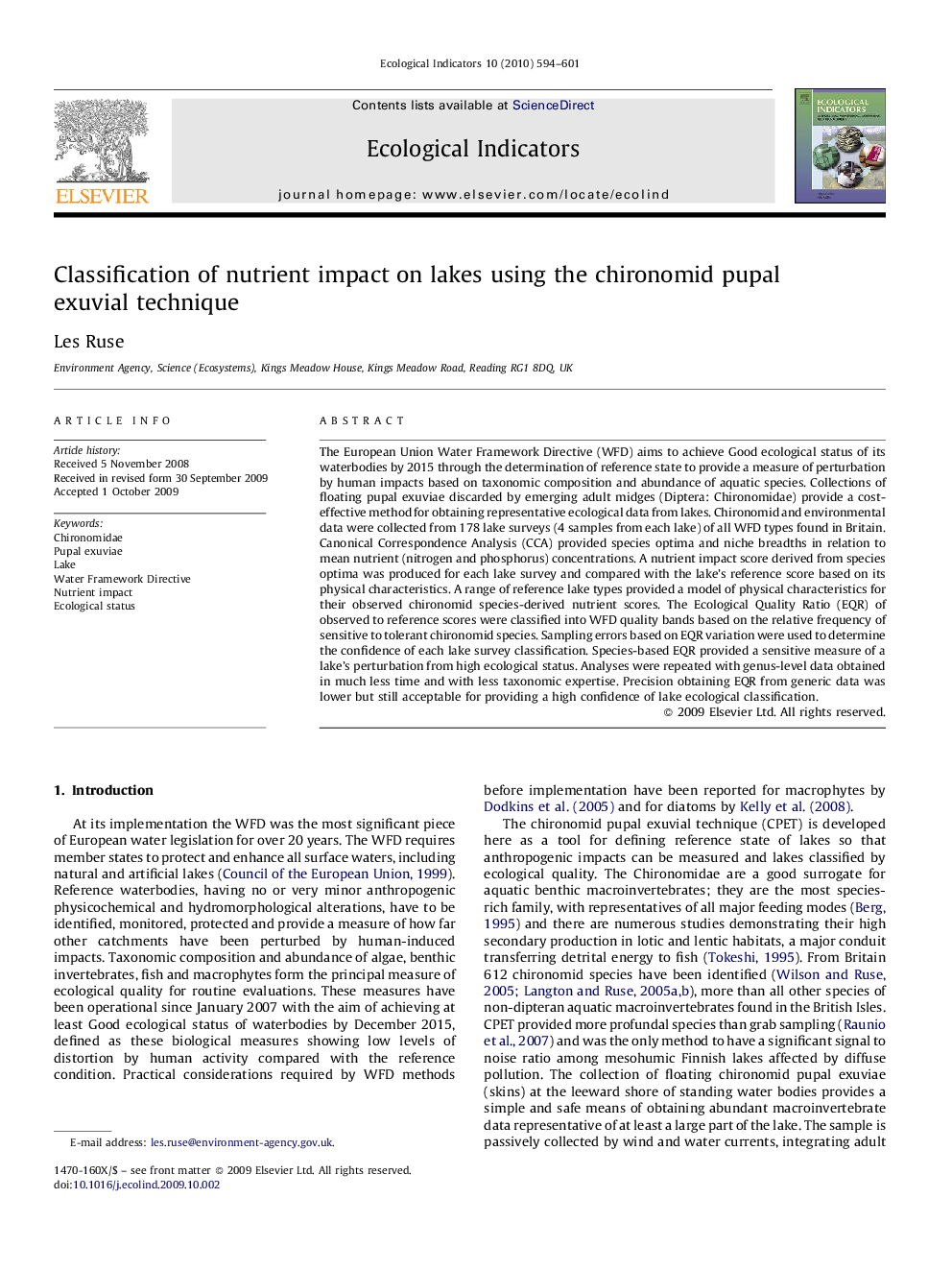| Article ID | Journal | Published Year | Pages | File Type |
|---|---|---|---|---|
| 4374200 | Ecological Indicators | 2010 | 8 Pages |
The European Union Water Framework Directive (WFD) aims to achieve Good ecological status of its waterbodies by 2015 through the determination of reference state to provide a measure of perturbation by human impacts based on taxonomic composition and abundance of aquatic species. Collections of floating pupal exuviae discarded by emerging adult midges (Diptera: Chironomidae) provide a cost-effective method for obtaining representative ecological data from lakes. Chironomid and environmental data were collected from 178 lake surveys (4 samples from each lake) of all WFD types found in Britain. Canonical Correspondence Analysis (CCA) provided species optima and niche breadths in relation to mean nutrient (nitrogen and phosphorus) concentrations. A nutrient impact score derived from species optima was produced for each lake survey and compared with the lake's reference score based on its physical characteristics. A range of reference lake types provided a model of physical characteristics for their observed chironomid species-derived nutrient scores. The Ecological Quality Ratio (EQR) of observed to reference scores were classified into WFD quality bands based on the relative frequency of sensitive to tolerant chironomid species. Sampling errors based on EQR variation were used to determine the confidence of each lake survey classification. Species-based EQR provided a sensitive measure of a lake's perturbation from high ecological status. Analyses were repeated with genus-level data obtained in much less time and with less taxonomic expertise. Precision obtaining EQR from generic data was lower but still acceptable for providing a high confidence of lake ecological classification.
